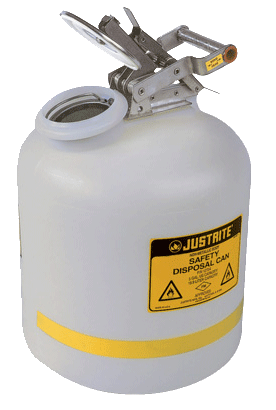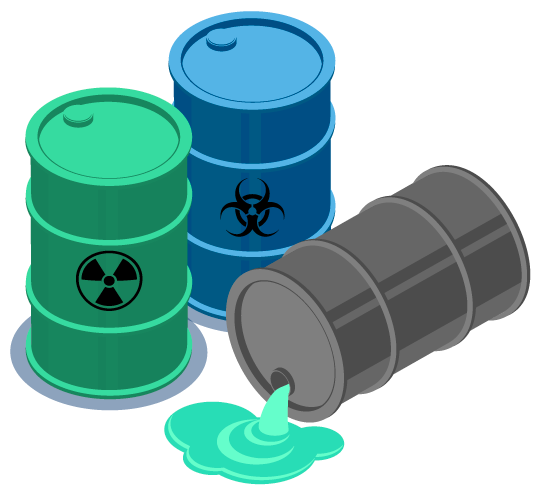Professional Liquid Waste Removal Melbourne: Keeping Your Atmosphere Tidy
Professional Liquid Waste Removal Melbourne: Keeping Your Atmosphere Tidy
Blog Article
Just How Fluid Garbage Disposal Works: An In-depth Introduction of Techniques and Technologies Utilized

Introduction of Fluid Waste Types
The complexity of fluid waste types demands a detailed understanding of their attributes and implications for disposal. Liquid waste can generally be categorized into numerous kinds, consisting of commercial, local, farming, and contaminated materials. Each classification shows unique homes, requiring certain administration strategies to alleviate ecological and health and wellness threats.
Industrial liquid waste stems from producing processes and typically has a variety of impurities, such as heavy metals, solvents, and natural substances. Community liquid waste, largely comprising wastewater from homes and industrial facilities, includes raw material, nutrients, and pathogens (industrial wastewater treatment). Agricultural fluid waste, consisting of drainage from ranches, might have fertilizers, pesticides, and animal waste, positioning risks to water top quality and communities
Harmful fluid waste is characterized by its toxicity, sensitivity, or prospective to trigger damage. This classification includes materials like acids, bases, and certain chemicals that require rigorous handling and disposal procedures. Understanding these diverse liquid waste types is vital for developing effective disposal approaches and making certain compliance with ecological guidelines. Proper category and characterization are crucial for executing appropriate therapy techniques and decreasing the damaging influences on public wellness and the setting.
Physical Treatment Approaches

Screening is the preliminary action, where bigger fragments and particles are eliminated from the fluid waste using displays or grates. This process safeguards downstream equipment from damages and makes sure smoother operation. Adhering to testing, sedimentation makes use of gravitational pressure to separate solids from liquids. In sedimentation containers, heavier bits settle near the bottom, developing a sludge layer, while the cleared up liquid can be more dealt with.
Filtration is another crucial technique that involves passing the liquid via permeable materials, such as sand or membranes, to catch smaller particles. This step improves the quality of the fluid, making it ideal for succeeding treatment processes.

Chemical Treatment Methods
Chemical therapy strategies are crucial for efficiently handling liquid waste, particularly in addressing dissolved and colloidal pollutants that physical methods may not adequately remove. These strategies use different chemical representatives to neutralize, precipitate, or change dangerous materials into less hazardous types.
One typical approach is coagulation and flocculation, where chemicals such as alum or ferric chloride are contributed to advertise the aggregation of suspended bits. This procedure improves sedimentation, enabling less complicated removal of the resulting sludge. Furthermore, oxidation procedures, employing agents like chlorine or ozone, are employed to break down complicated organic compounds and microorganisms, providing the waste more secure for discharge or additional treatment.
Neutralization is one more vital method, which readjusts the pH of acidic or alkaline waste streams to neutral degrees, protecting against potential injury to downstream systems and the setting. Moreover, advanced oxidation processes (AOPs) make use of mixes of oxidants and ultraviolet light to weaken relentless contaminants, attaining a greater degree of therapy performance.
Organic Treatment Processes
Organic therapy procedures play an essential role in the management of fluid waste by making use of bacteria to break down organic matter and decrease contaminant degrees. These procedures can be broadly categorized into cardiovascular and anaerobic treatments, each employing details microbial communities to attain reliable waste destruction.
Cardiovascular therapy includes the usage of oxygen to promote the failure of natural materials by bacteria. This process is typically implemented in triggered sludge systems, where aeration tanks offer a conducive atmosphere for microbial development, resulting in the oxidation of natural toxins. The resultant biomass can be separated from treated effluent with sedimentation.
On the other hand, anaerobic treatment takes place in the lack of oxygen, counting on various bacteria to damage down raw material. This technique is specifically beneficial for high-strength waste, as it produces biogas, a renewable resource source, while lowering sludge manufacturing. Technologies such as anaerobic digesters are frequently utilized in local and commercial applications.
Both anaerobic and aerobic biological treatments not just decrease the environmental impact of fluid waste but likewise help with resource recuperation, making them necessary components of sustainable waste monitoring techniques. Their efficiency, effectiveness, and versatility support their widespread execution across numerous industries.
Arising Technologies in Disposal
Innovative techniques to liquid waste disposal are swiftly progressing, driven by improvements in innovation and an enhancing emphasis on sustainability. Among these emerging modern technologies, membrane layer bioreactors (MBRs) have obtained traction for their capability to combine biological therapy with membrane filtering, leading to premium effluent that can be reused in numerous applications. MBRs make it possible for smaller impacts and more effective procedures contrasted to conventional systems.
Another appealing advancement is using anaerobic digestion integrated with nutrient recuperation technologies, which not just deals with liquid waste however also generates biogas and recuperates beneficial nutrients like nitrogen and phosphorus. This dual benefit enhances resource effectiveness and lowers ecological influence.
In addition, progressed oxidation procedures (AOPs) are being adopted for the degradation of complex natural toxins. These methods use powerful oxidants and drivers to damage down contaminants at the molecular level, offering an extremely reliable service for tough waste streams.
Additionally, the integration of artificial intelligence and device knowing in waste administration systems is maximizing functional efficiency and predictive maintenance, leading to decreased costs and improved ecological compliance. These innovations mirror a substantial shift towards more lasting and effective fluid waste disposal practices.
Verdict
To conclude, effective fluid waste disposal demands an extensive understanding of various methods and modern technologies. The integration of physical, chemical, and biological therapy techniques guarantees the reliable administration of varied waste kinds. Furthermore, the industrial wastewater treatment development of ingenious modern technologies improves treatment efficacy and promotes sustainability in waste management techniques. By continuously progressing these approaches, it ends up being possible to deal with the growing challenges associated with liquid waste, ultimately adding to ecological defense and source healing.
Fluid waste disposal is a critical facet of environmental management, requiring a thorough understanding of numerous techniques and modern technologies tailored to various waste types. Fluid waste can broadly be categorized right into several kinds, including industrial, metropolitan, agricultural, and harmful waste. Agricultural liquid waste, including drainage from farms, might include fertilizers, chemicals, and animal waste, presenting threats to water high quality and environments.
Numerous physical treatment approaches play a vital role in taking care of liquid waste efficiently - industrial wastewater treatment.In verdict, efficient fluid waste disposal necessitates a detailed understanding of numerous techniques and modern technologies
Report this page